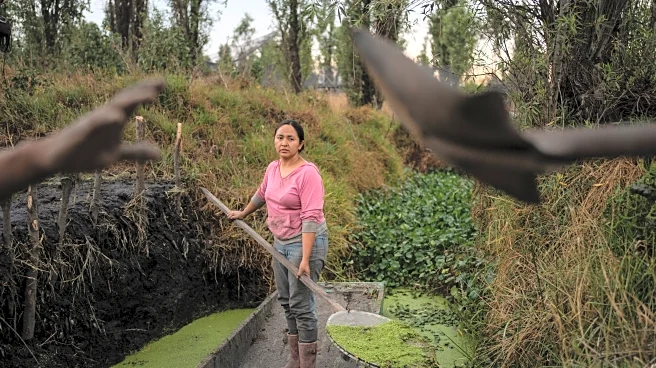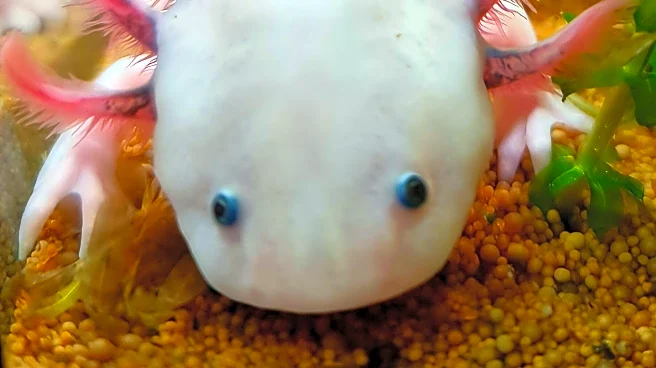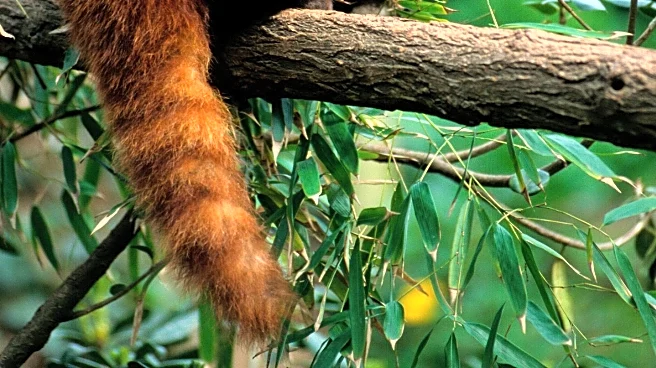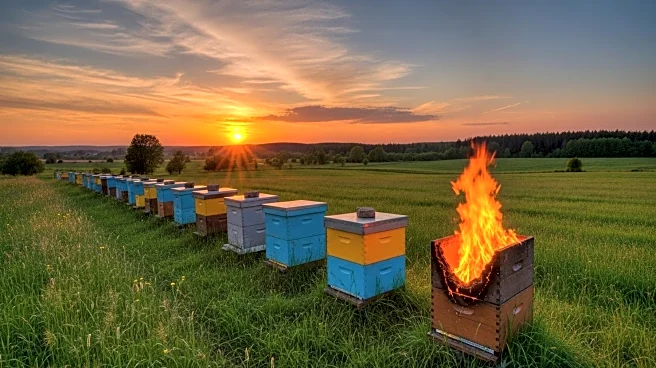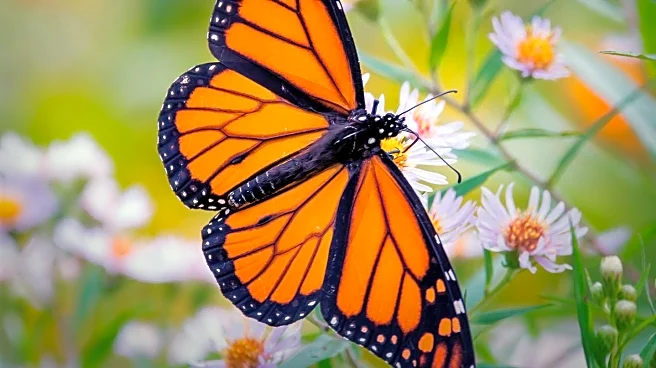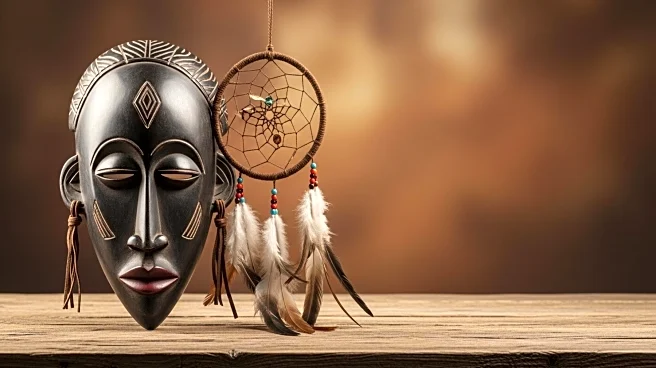What's Happening?
An injured monarch butterfly with a ripped-off wing has successfully flown again after undergoing a pioneering wing transplant at the Sweetbriar Nature Center on Long Island. The procedure involved replacing the damaged wing with one from a deceased butterfly of similar size. This delicate operation was performed using fine tools, allowing the butterfly to continue its migration to Mexico. The transplant was initiated after a Good Samaritan contacted the center for assistance. Monarch butterflies are known for their extensive migratory journey, traveling thousands of miles annually. However, their population has been declining due to the destruction of milkweed, their primary food source, by herbicides.
Why It's Important?
The successful wing transplant highlights innovative conservation efforts aimed at preserving endangered species like the monarch butterfly. Monarchs play a crucial role in pollination and are an indicator of environmental health. Their population has decreased by up to 72% in North America between 2012 and 2022, leading to their classification as endangered in 2022. This decline is attributed to habitat loss and the widespread use of herbicides. The wing transplant not only aids individual butterflies but also raises awareness about the importance of conservation and the need for sustainable practices to protect biodiversity.
What's Next?
The Sweetbriar Nature Center's successful procedure may inspire similar conservation efforts and techniques to aid other endangered species. As awareness grows, there could be increased advocacy for the protection of monarch habitats and the reduction of herbicide use. Conservationists and environmental groups may push for policy changes to safeguard milkweed and other critical resources. Additionally, the center's innovative approach could lead to further research and development in wildlife rehabilitation techniques, potentially benefiting a wide range of species facing similar threats.
Beyond the Headlines
The wing transplant underscores the ethical considerations in wildlife conservation, balancing human intervention with natural processes. It raises questions about the extent to which humans should intervene in nature to preserve species. The procedure also highlights the cultural significance of monarch butterflies, which are celebrated for their beauty and migratory journey. As conservation efforts continue, there may be a shift towards more holistic approaches that integrate scientific innovation with traditional ecological knowledge.


